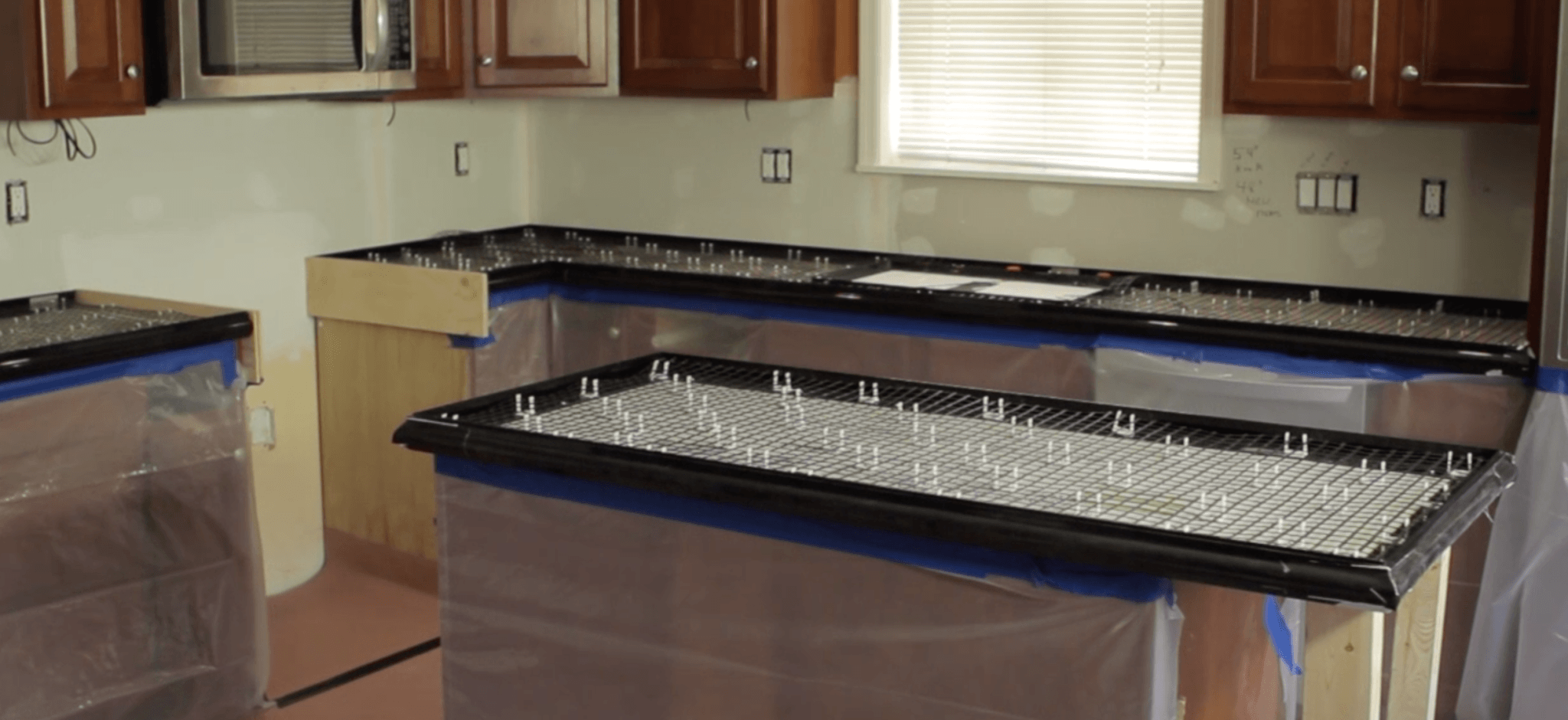Pre-Cast vs. Cast-in-Place Concrete Countertops
Is it better to pre-cast or cast in place when pouring concrete countertops? This can be a tricky question. The reality is that it’s absolutely personal preference and every job is going to be different. What works for one person’s concrete countertops may not be the best option for another. For this reason, we offer concrete countertop form packages for both pre-cast and pour in place countertops.
Pre-casting concrete countertops can be cleaner since it’s typically done in a shop, garage or basement and the kitchen itself sees minimal dust and mess. The downside is that it can be difficult to move (especially if the installation site isn’t on the same property). Most pre-casted concrete countertops will have air bubbles and voids when the concrete is flipped over so they are typically slurried and polished before installation. A slurry is a special mix such as our Counter-Patch which is used as a grout to fill in any pin holes or voids in the edge or surface of the countertop. When pre-casting, it is highly recommended to wet cure or to keep covered with plastic for 48-72 hours in order to reduce the chance of curling. This happens when the top surface that is open to air cures at a faster rate than the concrete inside the mold. Also, you may be left with unsightly seams if the top is too big to be poured/transported in one piece.
Pouring in place can give you a seamless concrete countertop with a decorative edge profile. It can be an easier project than pre-casting but it can also leave you without a working kitchen for several days. When you pour in place, you can choose between a troweled surface (more of a natural concrete look) or a polished surface (smooth and slick).
If you like the more natural, troweled finish look, pouring in place is the way to go. Although you can still polish the concrete when the countertop is in place, it tends to be a messy job, especially when done indoors. There are other ways to smooth a poorly troweled top so don’t let the idea scare you. That’s the beauty of concrete countertops, almost everything can be fixed. We offer a wide array of concrete countertop products to ensure you don’t run into some common problems and also products to fix them if they do happen.
Each job is going to be different. Each technique has its benefits and downfalls. You will need to evaluate your project and choose the best method for you. Do your research, ask questions and reach out to professionals, especially if you’re a DIY concrete countertop installer. Our technical team is more than happy to help with any questions you may have.
Written by:

